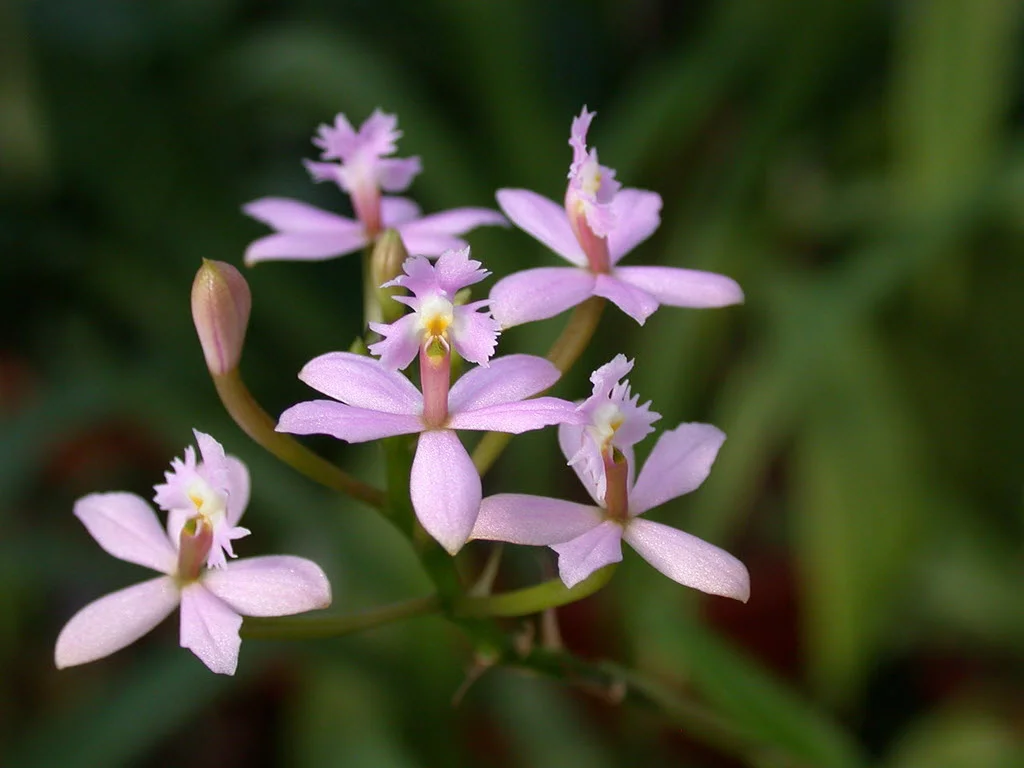Table of Contents
Pronunciation: max-ih-LARE-ee-uh
Other Names: None
Introduction
The Maxillaria orchid gets its name from the Latin word maxilla, or jawbone. This is because its lip and column looks very much like the jaw of an insect.
The Maxillaria orchid usually creates small fragrant blooms. Depending on the species they smell like vanilla, fresh coconut, or some other pleasant scent.
Maxillaria flowers typically come in a variety of colors, such as yellow, white, dark purple, all shades of red, and even near-black. Others showcase a yellow and brown mix of colored stripes which resemble the coat of a tiger. They can also sometimes look like little flames because of their coloration.
Maxillaria sanguinea
The Maxillaria orchid’s blooms come in different sizes. There are some that bloom just half an inch in diameter, whereas some can reach up to six inches in diameter. Overall, they usually have a triangular shape. The short flower spikes sprout from the pseudobulb’s base then each typically produces one bloom.
Maxillaria orchids can grow in different types of elevations, ranging from sea level up to 12,000 feet. Due to the difference in range of elevation, the cultural requirements vary widely.
Temperature
The daytime temperature requirements for Maxillaria orchids range between 70°F to 85°F (21.1°C to 29.4°C). For night temperatures, the requirement ranges from 55°F to 60°F (12.8°C to 15.6°C).
The variety of Maxillaria actually determines the need for higher or lower temperatures. The species from higher elevation need cooler temperatures, and the lower elevation species can be exposed to a little warmer temperature. It’s vital to determine where your Maxillaria orchid is from.
Light
The Maxillaria orchid thrives better in bright yet indirect light. Still, it is important to know the variety that you have so you can adjust accordingly.
The best location for your Maxillaria is facing west on your windowsill. You can also place it within one foot of a windowsill facing south. Always take note that you need indirect sunlight exposure to your Maxillaria orchid in order for the leaves to avoid sunburn or damage.
Water and Humidity
The Maxillaria orchid prospers more in humid conditions. The humidity that is ideal for a Maxillaria orchid ranges from 40-70 percent.
If you need to increase humidity, you can opt to use a humidifier or a humidity tray. The more humid the environment your Maxillaria orchid lives in, the more air movement it needs in order to prevent any type of disease.
Feeding
A Maxillaria orchid should be fertilized twice each month via a diluted fertilizer solution (20-20-20). Once a month you should also flush your Maxillaria orchid so that excess salts and fertilizer can be removed. Otherwise, these can cause damage when they build-up over time.
Potting
The Maxillaria orchid is an orchid type that does not like to be disrupted. They flourish well with as little disturbance as possible.
These orchids usually have fine roots that must be repotted via a fine-grade potting mix. The ideal potting mix for a Maxillaria orchid is sphagnum moss plus fine grade bark. The bark works to drain properly while the moss assists in retaining some moisture.
It is common for a Maxillaria orchid to have brown or yellow roots so don’t assume that the roots are already dead when you see this. This is very common for a Maxillaria orchid and even works as a sign that it is still healthy. On the other hand, when you water it, the roots usually turn green. The Maxillaria orchid grows well even when grown or mounted in slat baskets.
Video
Check out these real life examples of different Maxillaria species. See what they like and don't like in this useful video.
There are more orchids that have amazing scents like citrus, vanilla, and even chocolate. You can read all about them in our list of the most fragrant orchids.. Or, you can also check out all the different orchid varieties to see what else you can add to your garden collection.











